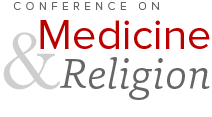Liturgies and Tradition in Medicine: Serving a Diverse World
Nathaniel Brown, MD, PhD, Staff Physician & Senior Instructor, Rocky Mountain Regional VAMC & University of Colorado SOM
Medicine used to be a learned profession, its members part of conversations stretching millennia into the past. It no longer is, having traded in a place around the story-fire of our collective ancestry to strike out on its own, imagining its feeble spotlight as illumining the whole of reality. A couple of generations later and medicine is now entering an era where we are beginning to recognize that science cannot be a totalizing worldview, but we are not yet brave enough to admit it out loud. We are currently hiding behind movements such as narrative medicine, medicine and the arts, wellness initiatives, etc. to help us reconnect with something that we sense, perhaps only vaguely, we’ve lost. What we’ve lost is meaning itself, and it can only be recaptured by situating medicine within a particular worldview and abandoning the idea that medicine, or science more broadly, can be a worldview unto itself.
I do not mean to imply that there was a golden age that medicine somehow abandoned. No. Medicine, like all deeply contextualized endeavors, evolves along with the culture that houses it, such that going backwards is neither a viable option, nor a desirable one. If medicine was a smoother endeavor in the recent past, it is, in large part, because the roles of those acting in its drama were set, and each person played their part. The meaning that medicine’s participants shared through its various rituals knit people together and allowed special varieties of meaning to be accentuated and even brought to a kind of poignant relief through the various acts of medical caring.
Though medicine can be a drama, as I called it above, it is more properly a liturgy. The archetypal image of liturgy in medicine is the physical exam, but that is too narrow. The whole complexity of actions that compose medicine ought to be understood as a kind of liturgy. In fact, on the view I advance, liturgy is what medicine fundamentally is.
Liturgies are interpretive; in other words, they are, in part, physical enactments of theories. They help communities make and transmit meaning. As such, liturgies are vehicles of traditions, which are themselves ways of creating identity and preserving memory.
Since the meaning of medicine is properly various in a pluralistic society, the liturgical content should also be varied. Medicine is currently at an awkward stage where it retains a great deal of ritual uniformity, which is really vestigial as medicine grows and becomes morally differentiated, mirroring the society it serves.
Viewing medicine as liturgy opens a new way of asking and answering fundamental questions regarding tradition, legitimacy, biopolitics—and ultimately, power. Perhaps the most interesting questions address what roles various orthodoxies play and, crucially, where the innovative troublemakers fit in. If medicine is foundationally liturgical, the types that we enact need to faithfully convey the plurality of meanings that we increasingly seek in medicine. We need to acknowledge, and even encourage, liturgical diversity in the delivery of modern medical care.
I do not mean to imply that there was a golden age that medicine somehow abandoned. No. Medicine, like all deeply contextualized endeavors, evolves along with the culture that houses it, such that going backwards is neither a viable option, nor a desirable one. If medicine was a smoother endeavor in the recent past, it is, in large part, because the roles of those acting in its drama were set, and each person played their part. The meaning that medicine’s participants shared through its various rituals knit people together and allowed special varieties of meaning to be accentuated and even brought to a kind of poignant relief through the various acts of medical caring.
Though medicine can be a drama, as I called it above, it is more properly a liturgy. The archetypal image of liturgy in medicine is the physical exam, but that is too narrow. The whole complexity of actions that compose medicine ought to be understood as a kind of liturgy. In fact, on the view I advance, liturgy is what medicine fundamentally is.
Liturgies are interpretive; in other words, they are, in part, physical enactments of theories. They help communities make and transmit meaning. As such, liturgies are vehicles of traditions, which are themselves ways of creating identity and preserving memory.
Since the meaning of medicine is properly various in a pluralistic society, the liturgical content should also be varied. Medicine is currently at an awkward stage where it retains a great deal of ritual uniformity, which is really vestigial as medicine grows and becomes morally differentiated, mirroring the society it serves.
Viewing medicine as liturgy opens a new way of asking and answering fundamental questions regarding tradition, legitimacy, biopolitics—and ultimately, power. Perhaps the most interesting questions address what roles various orthodoxies play and, crucially, where the innovative troublemakers fit in. If medicine is foundationally liturgical, the types that we enact need to faithfully convey the plurality of meanings that we increasingly seek in medicine. We need to acknowledge, and even encourage, liturgical diversity in the delivery of modern medical care.
